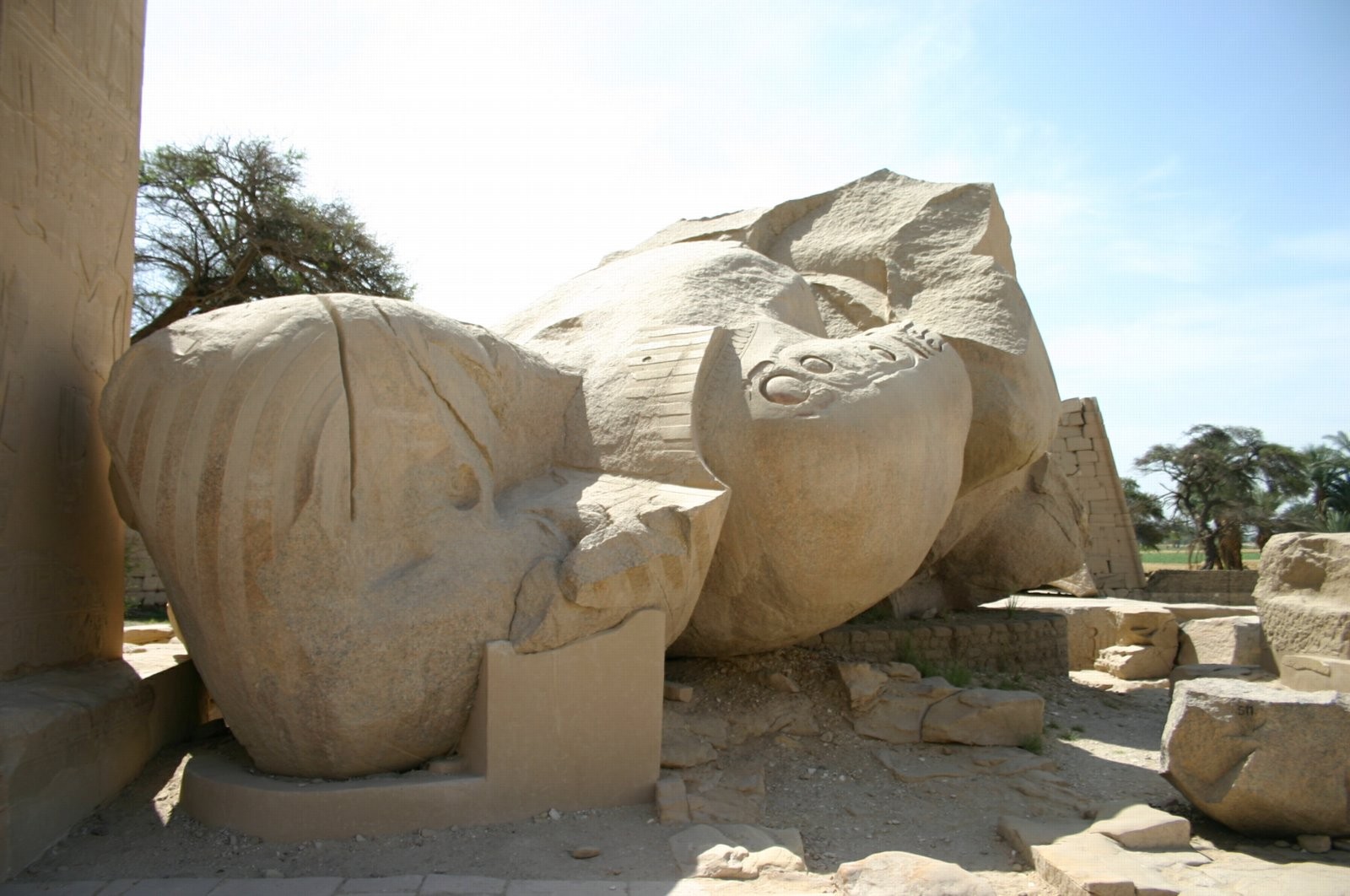

These ruins of the statue
of Rameses the Great inspired the following sonnets in 1817:
| Ozymandias |
Ozymandias | |
|
|
|
I met a traveller from an antique land |
In Egypt’s sandy silence, all alone, |
|
Who said: “Two vast and trunkless legs of stone |
Stands a gigantic Leg, which far off throws |
|
Stand in the desert. Near them, on the sand, |
The only shadow that the Desert knows. |
|
Half sunk, a shattered visage lies, whose frown, |
“I am great Ozymandias,” saith the stone, |
|
And wrinkled lip, and sneer of cold command, |
“The King of kings: this mighty city shows |
|
Tell that its sculptor well those passions read |
The wonders of my hand.” The city’s gone! |
|
Which yet survive, stamped on these lifeless things, |
Nought but the leg remaining to disclose |
|
The hand that mocked them, and the heart that fed; |
The site of that forgotten Babylon. |
|
And on the pedestal these words appear: |
We wonder, and some hunter may express |
|
My name is Ozymandias, king of kings: |
Wonder like ours, when through the wilderness |
|
Look on my works, ye Mighty, and despair! |
Where London stood, holding the wolf in chase, |
|
Nothing beside remains. Round the decay |
He meets some fragment huge, and stops to guess |
|
Of that colossal wreck, boundless and bare |
What wonderful, but unrecorded, race |
|
The lone and level sands stretch far away.” |
Once dwelt in that annihilated place. |
|